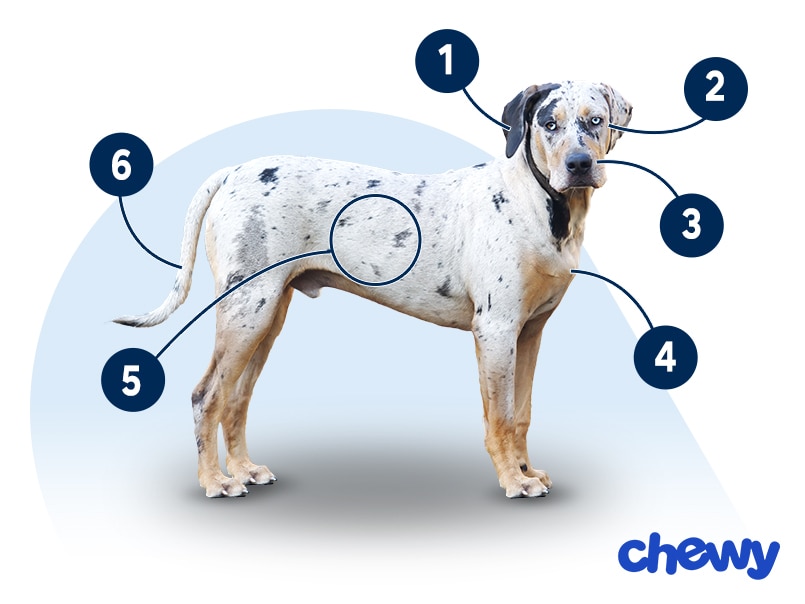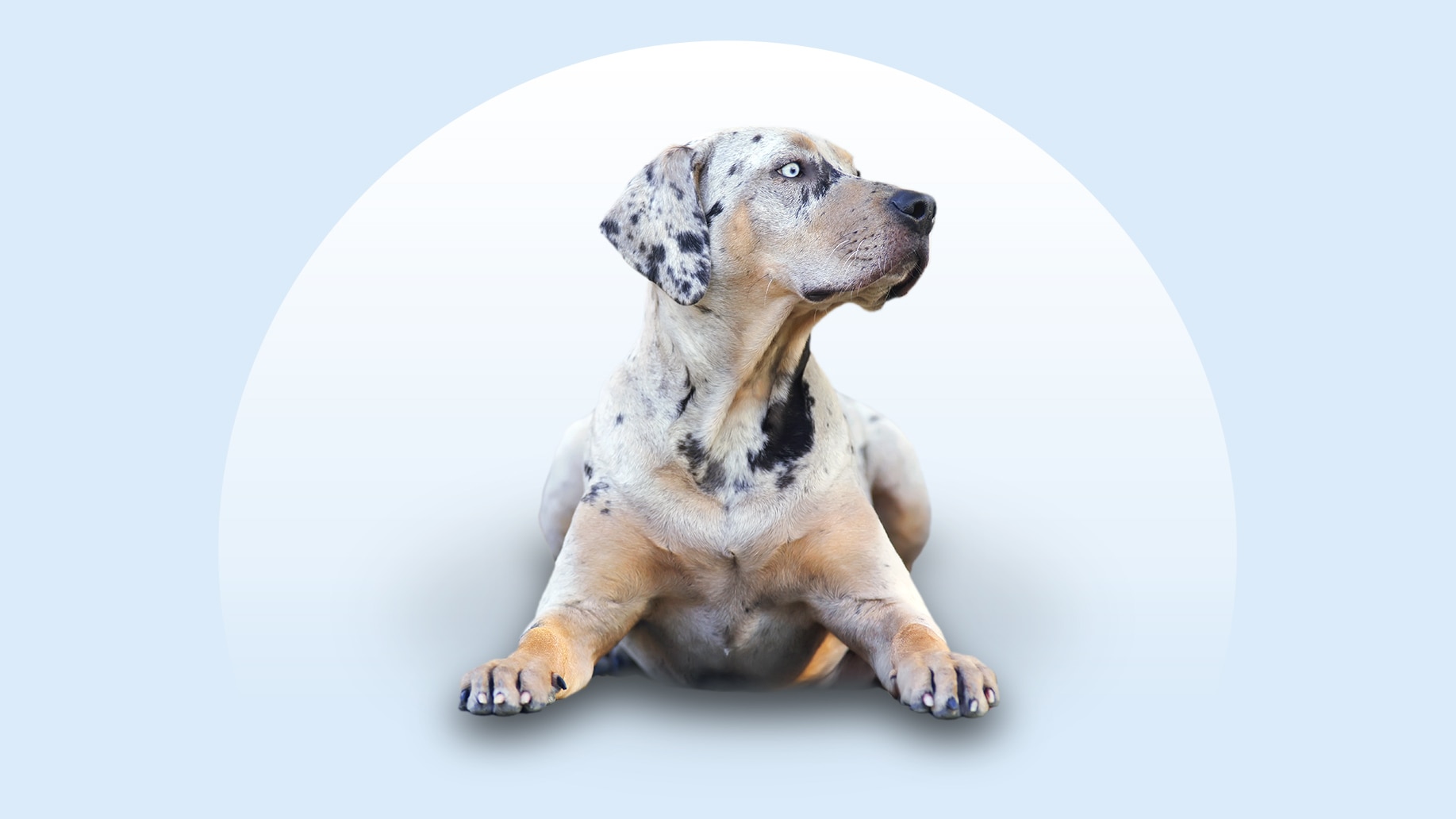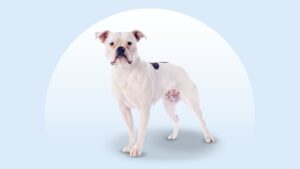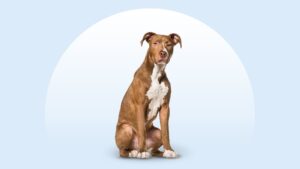Catahoula Leopard Dog
Updated July 8, 2025
Catahoula Leopard Dog
Updated July 8, 2025
The Catahoula Leopard Dog is a bold, beautiful breed with a striking coat and an unmatched work ethic. Bred for herding and hunting, this loyal and intelligent companion thrives on adventure, mental stimulation, and confident leadership from an experienced, active pet parent.
Energetic, Independent, Loyal
50–95 pounds
22–24 inches
10–14 years
Black, Black Merle, Blue, Blue Merle, Brindle, Chocolate, Red, Red Merle, White Merle, Yellow, Yellow Merle
Catahoula Leopard Dogs are a whirlwind of energy, brains, and personality wrapped in a brindle or merle coat. They have a serious need for a job to do and are happiest when outside with their family.
Fair warning: You’ll need to channel their boundless energy daily, or your furniture or backyard might pay the price.
When they get enough exercise and mental stimulation, the Catahoula Leopard Dog’s personality makes them a loyal and independent companion. Give them purpose, space to run, and plenty of love, and you’ll have an extremely devoted companion by your side.
Catahoula Leopard Dog Characteristics
Catahoula Leopard Dog Appearance
The Catahoula Leopard Dog is a medium to large breed with an athletic build and a striking coat that often features a marbled, spotted, or brindle pattern. This breed is also known for their striking “glass” blue (or often mismatched) eyes.

- Ears
Their triangular ears are set high and typically drop close to the head, framing the face. They have a soft, natural fold without being overly long or heavy.
- Eyes
A Catahoula’s eyes can be blue, green, amber, brown, or heterochromia (meaning two different-colored eyes).
- Nose
The nose is typically black, although this can vary with coat color. It’s broad with wide nostrils, reflecting the breed's keen sense of smell.
- Coat Length
Catahoulas have a coat that’s short to medium in length. The texture is smooth, lies close to the body, and provides a sleek appearance and protection during outdoor activities.
- Coat Color
Their coat comes in a wide variety of colors and patterns, including solid, brindle, and merle. Patches and speckles are common and contribute to the breed’s leopard-like look.
- Tail
A Catahoula’s long tail is carried in a slightly curved position when relaxed, and becomes more expressive when alert or excited.
Catahoula Leopard Dog Temperament
The Catahoula Leopard Dog’s temperament is independent and intensely loyal.
Bred to work, they have strong instincts and thrive when focusing on a job like herding livestock, tracking game, or scent work. This working history means a Catahoula Dog can be reserved around strangers, and they’re often better suited for experienced pet parents who can provide consistent guidance and positive reinforcement-based training.
Early socialization is key to helping a Catahoula warm up to new people, but their independent nature might not make them the best choice for multi-animal households. Introducing a dog to other pets early and slowly is important.
Catahoulas are not typically cuddly lapdogs. They form strong bonds with their family members, but they’ll show it in other ways, like following you around and staying alert for new and suspicious stimuli.
How to Care for a Catahoula Leopard Dog
Caring for a Catahoula Leopard Dog is a rewarding experience, but it’s not for every pet parent. These dogs are smart, strong-willed, and full of energy.
Pet parents can expect daily exercise, consistent training, and clear leadership to ensure a happy, well-balanced companion. Providing structure, and plenty of mental and physical stimulation, is key to successful Catahoula care.
Grooming
Training
Diet
Exercise
Environment
Catahoula Leopard Dog Health
The average Catahoula Leopard Dog lifespan is 10–14 years, and they are generally healthy. But like all breeds, Catahoula Dogs are predisposed to certain health conditions, like:
- Hip dysplasia: Hip dysplasia is a hereditary condition where the hip joint doesn’t develop properly, causing discomfort, mobility issues, and arthritis. Maintaining a healthy weight can help reduce the risk of hip dysplasia. Treatment depends on severity and can include anything from joint supplements to surgery.
- Deafness: Catahoula puppies, particularly those with mostly white or merle coats, can be born deaf. Deafness in dogs can occur in one or both ears, and reputable breeders will screen their Catahoula puppies for hearing impairments.
- Eye conditions: Certain eye disorders, such as progressive retinal atrophy (PRA), blindness, and cataracts, can affect Catahoula Leopard Dogs, potentially leading to vision loss. Regular veterinary eye exams are crucial for early diagnosis and treatment.
- Skin sensitivities: Catahoulas may experience skin issues, often caused by allergies. Regular grooming, flea prevention, and high-quality diets can help minimize flare-ups.
Catahoula Leopard Dog History
The Catahoula Leopard Dog originated near Catahoula Lake in Louisiana.
These striking Louisiana dogs were bred by settlers in the 1800s to drive cattle and track wild hogs through Southern farms and ranches, according to the Catahoula Owners, Breeders & Research Association (COBRA). Their strong herding instinct, agility, stamina, and assertive personality made them ideal for tracking and corralling challenging, often-dangerous livestock.
Though highly regarded for their abilities, Catahoulas were relatively unknown outside the Southern United States until recent decades. The American Kennel Club (AKC) officially recognized the breed in 1996.
Today, Catahoula Leopard Dogs remain beloved for their working heritage, loyalty, and versatility, serving as companions and working dogs alike. Their history as rugged, capable partners continues to shape their character and popularity among dog enthusiasts.





